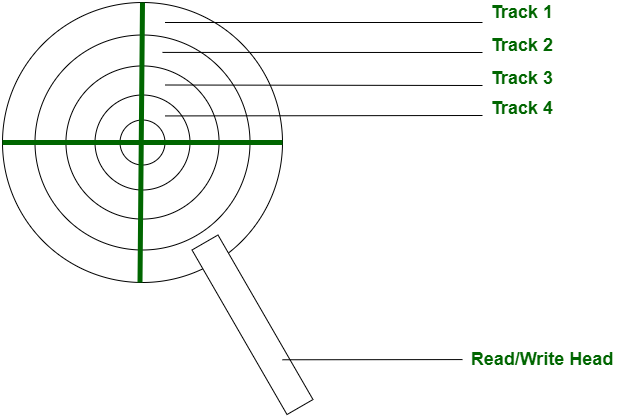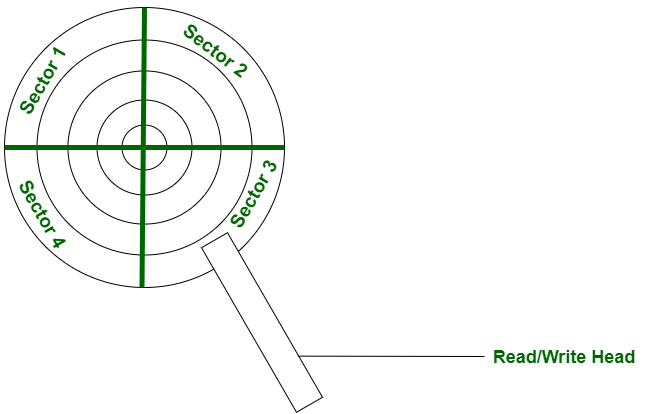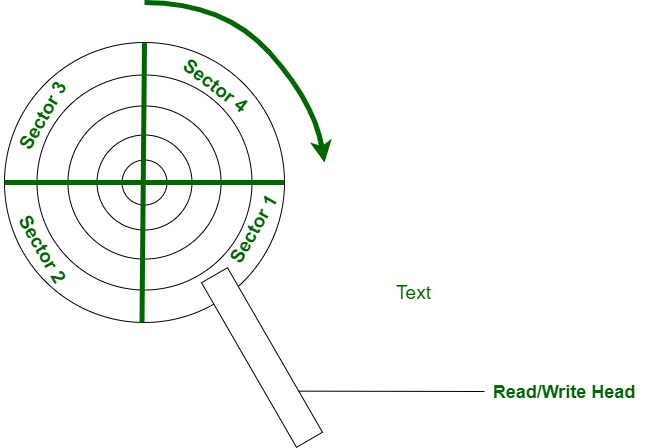寻找时间:
一个磁盘被分成许多圆形轨道。寻道时间定义为读/写磁头从一个磁道移动到另一磁道所需的时间。
例子,
考虑下图,读/写磁头当前在磁道 1 上。

现在,在下一个读/写请求中,我们可能想要从 Track 4 读取数据,在这种情况下,我们的读/写头将移动到 4 轨道。到达 4 轨道所需的时间是寻道时间。

旋转延迟:
磁盘被分成许多环形磁道,这些磁道被进一步划分为称为扇区的块。读/写磁头从当前位置旋转到请求扇区所需的时间称为旋转延迟。
例子,
考虑下图,我们将每个轨道分为 4 个扇区。
系统收到从磁道 1 读取扇区的请求,因此读/写磁头将移动到磁道 1,这次将是寻道时间。
读/写磁头当前位于扇区 3。

但是数据可能不在扇区 3 中。数据块可能在扇区 1 中。读/写磁头从扇区 3 移动到扇区 1 所需的时间是旋转延迟。
下面是最终的配置。

让我们看看旋转延迟和寻道时间之间的区别。
| S.NO. | Seek Time | Rotational Latency |
|---|---|---|
| 1 | It is the time required by read/write head to move from one track to other. | It is the time required by read/write head to move from one sector to other. |
| 2 | Most disk scheduling only use seek time. | Most disk scheduling do not consider rotational frequency because in most modern system, the actual physical location of blocks in not available. |
| 3 | It can be reduced if subsequent request belongs to same track or near. | It can be reduced if subsequent request belongs to adjacent sector. |
| 4 | Seek Time = (Time to cross 1 cylinder(track))*(No of cylinder(track) crossed). | Rotational Latency = (Angle between current position and the required sector) / (Rotational frequency). |